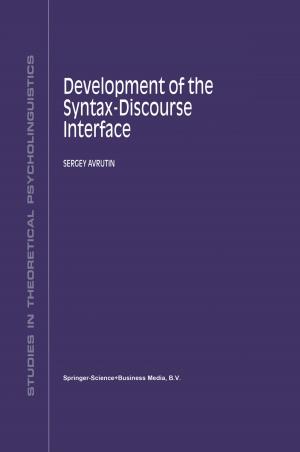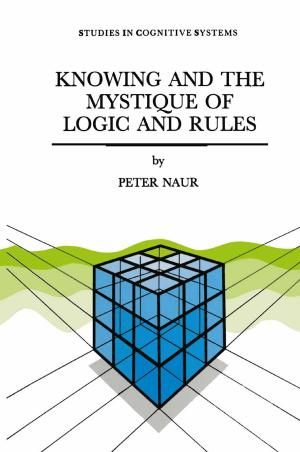Developmental Neurocognition
Speech and Face Processing in the First Year of Life
Nonfiction, Health & Well Being, Medical, Specialties, Internal Medicine, Neurology, Reference & Language, Language Arts, Linguistics| Author: | ISBN: | 9789401582346 | |
| Publisher: | Springer Netherlands | Publication: | March 9, 2013 |
| Imprint: | Springer | Language: | English |
| Author: | |
| ISBN: | 9789401582346 |
| Publisher: | Springer Netherlands |
| Publication: | March 9, 2013 |
| Imprint: | Springer |
| Language: | English |
This volume contains the proceedings of a NATO Advanced Research Workshop (ARW) on the topic of "Changes in Speech and Face Processing in Infancy: A glimpse at Developmental Mechanisms of Cognition", which was held in Carry-Ie-Rouet (France) at the Vacanciel "La Calanque", from June 29 to July 3, 1992. For many years, developmental researchers have been systematically exploring what is concealed by the blooming and buzzing confusion (as William James described the infant's world). Much research has been carried out on the mechanisms by which organisms recognize and relate to their conspecifics, in particular with respect to language acquisition and face recognition. Given this background, it seems worthwhile to compare not only the conceptual advances made in these two domains, but also the methodological difficulties faced in each of them. In both domains, there is evidence of sophisticated abilities right from birth. Similarly, researchers in these domains have focused on whether the mechanisms underlying these early competences are modality-specific, object specific or otherwise.
This volume contains the proceedings of a NATO Advanced Research Workshop (ARW) on the topic of "Changes in Speech and Face Processing in Infancy: A glimpse at Developmental Mechanisms of Cognition", which was held in Carry-Ie-Rouet (France) at the Vacanciel "La Calanque", from June 29 to July 3, 1992. For many years, developmental researchers have been systematically exploring what is concealed by the blooming and buzzing confusion (as William James described the infant's world). Much research has been carried out on the mechanisms by which organisms recognize and relate to their conspecifics, in particular with respect to language acquisition and face recognition. Given this background, it seems worthwhile to compare not only the conceptual advances made in these two domains, but also the methodological difficulties faced in each of them. In both domains, there is evidence of sophisticated abilities right from birth. Similarly, researchers in these domains have focused on whether the mechanisms underlying these early competences are modality-specific, object specific or otherwise.















